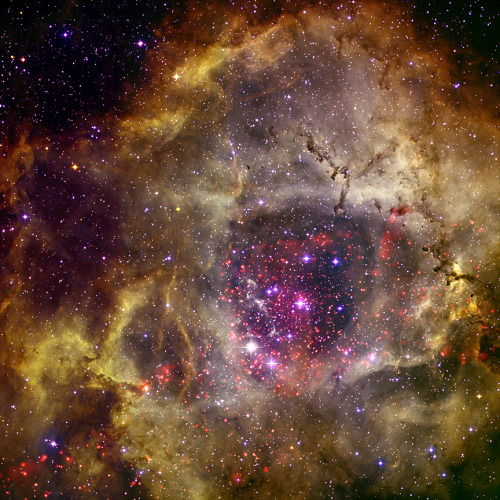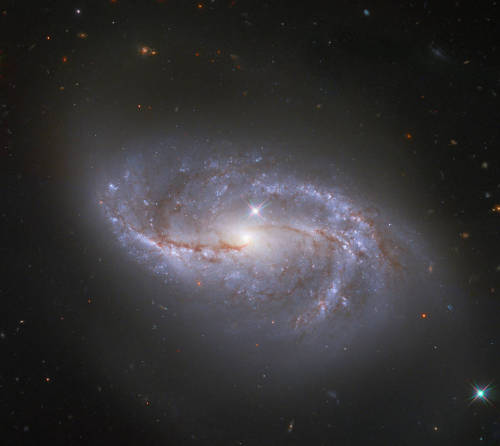Hubble - Tumblr Posts

Hoag’s Object, a nearly perfect “ring galaxy” captured by the Hubble Space Telescope (Credit: NASA)
Say Hello to NGC 6441

Location: In the Scorpius constellation
Distance from Earth: About 44,000 light-years
Object type: Globular star cluster
Discovered by: James Dunlop in 1826
Each tiny point of light in this image is its own star - and there are more than a million of them! This stunning image captured by the Hubble Telescope depicts NGC 6441, a globular cluster that weighs about 1.6 million times the mass of our Sun. Globular clusters like NGC 6441 are groups of old stars held together by their mutual gravitational attraction, appearing nearly spherical in shape due to the density of stars that comprises them. This particular cluster is one of the most massive and luminous in our Milky Way Galaxy. It is also home to a planetary nebula and four pulsars (rotating neutron stars that emit beams of radiation at steady intervals, detected when the beams are aimed at Earth).
Read more information about NGC 6441 here.
Right now, the Hubble Space Telescope is delving into its #StarrySights campaign! Find more star cluster content and spectacular new images by following along on Hubble’s Twitter, Facebook, and Instagram.
Make sure to follow us on Tumblr for your regular dose of space!

The veil nebula is 110 light-years across, covering six full moons in the sky, seen from Earth, and resides about 2,100 light-years away in the constellation Cygnus the Swan.
Image credit: NASA, ESA & Hubble

Star Goes Supernova
Messier 20 and 21
Image Credit & Copyright: Stanislav Volskiy, Chilescope Team


Star Goes Supernova

The veil nebula is 110 light-years across, covering six full moons in the sky, seen from Earth, and resides about 2,100 light-years away in the constellation Cygnus the Swan.
Image credit: NASA, ESA & Hubble
Messier 20 and 21
Image Credit & Copyright: Stanislav Volskiy, Chilescope Team


Star Goes Supernova

Hubble classic view of Orion nebula🌌

Mars
Credit: space hub

Whirlpool galaxy
Credit : Hubble and chandraxray

Barred Spiral Galaxy
NGC 2146 is a barred spiral galaxy located approximately 80 million light-years away in the constellation Camelopardalis.
It is an interesting object of study due to its dusty spiral arm that has looped in front of the galaxy's core as seen from our perspective.
Credits: ESA/Hubble & NASA

NGC 2237 Rosette Nebula

Hubble Glimpses a Galaxy Among Many
Looking deep into the universe, the NASA/ESA Hubble Space Telescope catches a passing glimpse of the numerous arm-like structures that sweep around this barred spiral galaxy, known as NGC 2608. Appearing as a slightly stretched, smaller version of our Milky Way, the peppered blue and red spiral arms are anchored together by the prominent horizontal central bar of the galaxy.
Source: NASA








